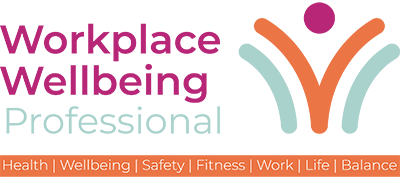Last year’s Global Human Capital Trends report by professional services firm Deloitte found that 64% of executives frequently feel depleted at work. Yet fewer than a third have taken significant steps to address this reality.
In addition staff sickness costs are rising – from 73 million in 2018 to £103 billion in 2023 across UK employers according to the Institute for Public Policy Research. In response, many companies have turned to wellness initiatives to support their people. On the surface, this looks like progress. But beneath the meditation apps and mindfulness challenges, something more concerning is happening: wellness washing.
Wellness washing is when companies promote a caring image through token wellbeing efforts, without addressing the deeper issues that truly impact employee health. And it’s everywhere.
The Allure of Quick Fixes
From virtual yoga to Friday smoothie drops, wellness perks have become the mark of modern company culture. But these surface-level initiatives often serve more as PR than genuine support. When underlying issues like excessive workloads, increased digital demands or a lack of clear priorities go unaddressed, wellbeing programmes become a distraction rather than a solution.
Employees might welcome the perks, but they also know when something doesn’t add up. If a company offers a mindfulness app but regularly overloads teams with unrealistic deadlines, the message is clear: your wellbeing matters, as long as it doesn’t affect performance.
Remove the Blockers
What truly erodes employee wellness? It’s not a lack of yoga.
It’s overwhelming workloads, unclear stakeholder expectations and a pace of work that leaves no room to breathe. These are leadership and operational challenges, not just HR ones.
HR has a unique vantage point: you’re often the first to see the cracks before they widen. You have the influence to reshape the system — not just support people within it.
Some organisations are waking up to this. After recent restructures and the departure of key talent, forward-thinking companies are reassessing senior roles, making them more manageable, rethinking expectations, and investing in leadership models that multiply capability rather than extract it.
These aren’t just talent strategies; they’re wellness strategies too. Sustainable leadership starts with roles that are actually humanly possible to perform.
Moving Beyond the Surface
True wellbeing is cultural, not just programmatic. It lives in how priorities are set, how capacity is managed, and how leaders show up. It requires difficult conversations: about saying no, redefining success and shifting from a mindset of always-on to one of intentional focus.
Many organisations fall into the trap of flashy wellness offerings that lack substance. These may look progressive, but they fail to move the needle on daily experience.
Real wellbeing requires a cultural and operational shift. It’s not about a one-off resilience workshop. It’s about how teams manage priorities, how leaders handle capacity conversations and how performance is defined and measured.
And it asks something new of HR: to become architects of culture, not just stewards of programmes.
Companies that truly care about wellbeing don’t just offer perks. They model healthy behaviours from the top down, encourage sustainable pace and build psychological safety into the way they operate.
Stop Talking About Imposter Syndrome
I’ve a love-hate relationship with this term as it’s turned into a failure of some kind to simply not want to fit into an impossible norm. It keeps people disempowered, especially the women who are more likely to embrace it as a reason to shrink back rather than step up and be encouraged to change the system.
Offer the mindset work required to distinguish between where the ego is getting in the way and put the supports in place to enable key talent to shine.
Wellness as Part of the Bigger Picture
Wellness doesn’t live in a vacuum. It’s part of how a company treats people, contributes to society and operates in the world. The most progressive leaders connect employee wellbeing to ethical practices, environmental sustainability, and broader social impact. This is wellness with depth — the kind that’s felt, not just marketed.
A Personal Reflection
I work with senior leaders who deeply care about their people yet feel stuck in systems that reward output over sustainability. I’ve also coached high performers teetering on burnout, whose companies offered resilience webinars while ignoring the pace they are expected to maintain.
What strikes me most is how many leaders feel trapped wanting to lead differently, but unsure how to challenge the prevailing norms or take ownership of their own definition of success and do what’s required to prevent a significant health event.
I remember my own experience of burnout. On the outside, I was delivering, thriving even. But inside I was exhausted. It wasn’t until I stopped and re-evaluated that I realised something important: wellbeing isn’t a programme. It’s a choice. It starts with slowing down, getting clear on what matters and having the courage to lead in a more human way.
Wellness that sustains isn’t performative. It’s rooted in clarity, boundaries and presence.
Conscious Leadership: The Way Through
The antidote to wellness washing is conscious leadership. That means making employee wellbeing a core value, not a bonus topic. Conscious leaders are willing to have honest conversations, model vulnerability and make changes to the system, not just offer tools to cope with it.
They build cultures where wellbeing is felt, not just promised. Where expectations are clear, workloads are sustainable and people feel safe to speak up when they’re struggling.
This kind of leadership isn’t always easy. But it’s necessary.
The Opportunity Ahead
Wellness washing might offer a quick reputation boost, but it doesn’t build trust or results. Conscious leadership does.
When organisations commit to tackling the real issues behind burnout and stress, they don’t just protect their people’s wellbeing. They unlock better thinking, deeper connections and more sustainable performance.
Because in the end, true wellness isn’t found in a perk. It’s found in how we choose to lead.
HR has a pivotal role to play — not as the custodian of one-off wellness initiatives but as the conscience of the system. You’re uniquely positioned to challenge outdated expectations, influence leadership behaviours and co-design work environments where wellbeing is embedded, not bolted on.
A powerful starting point? Audit your top five “wellness” initiatives against the daily realities of your teams. Where are the misalignments? That’s where your work begins.

Caroline works with leaders to transform organisations and achieve success without burning themselves or their teams out. She has spent 20 years in senior leadership roles, including Head of Change in the Irish Central Bank during the Economic Bailout (Troika) Programme; and Global Head of Leadership Development in CRH plc, a Fortune 500 company.
During her career, Caroline has seen how leaders often sacrifice their health and that of their teams to succeed. She saw this first-hand when she became ill at 44 and had to give up her corporate career at the height of her success. It makes sense then that she would bring all this knowledge together in a unique way. She now works with leaders all over the world to support them in achieving the results they want without risking their personal health and corporate reputation.


